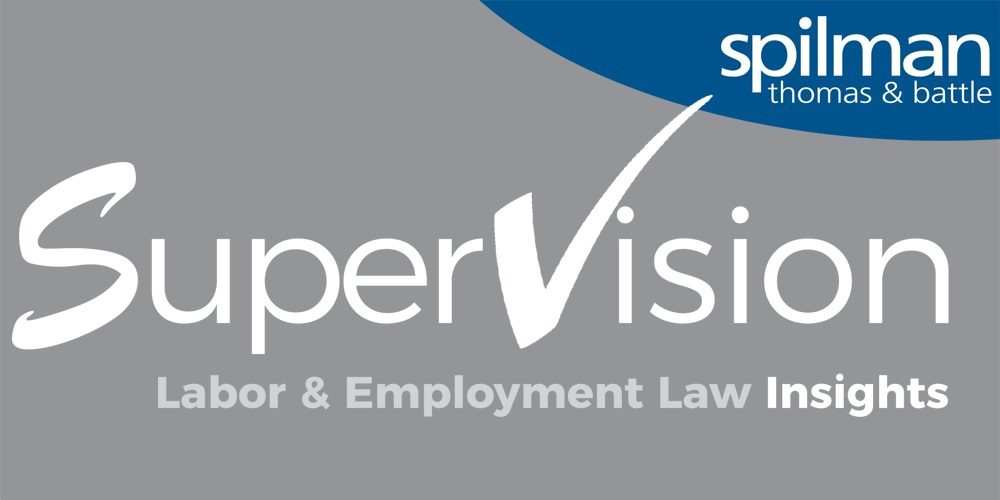Article
Resources
Article
Navigating AI in HR: The Benefits and Risks of Using Artificial Intelligence in Employment Policies

Artificial intelligence (AI) can be a tool used by employers to save time and improve compliance when drafting employment policies. However, AI’s current usefulness has limits and comes with risks. For example, when asked to “draft a policy regarding payment of wages following the separation of employment that complies with West Virginia law,” ChatGPT produced the following policy:
Definitions
- Separation of Employment: Includes resignation, termination, retirement, or any other form of employment ending.
- Wages: Includes all compensation for services rendered by an employee, including but not limited to salaries, hourly wages, commissions, bonuses, and accrued vacation pay.
Payment Upon Voluntary Separation
When an employee voluntarily resigns or retires, [Company Name] will pay all due wages, including any accrued benefits, no later than the next regular payday following the employee's last day of work. If the employee provides at least one pay period's notice, the wages will be paid on or before the last working day.
Payment Upon Involuntary Separation
In the event of an involuntary separation, such as termination, [Company Name] will pay all due wages, including any accrued benefits, within 72 hours of the separation.
Final Pay Calculation
- The final paycheck will include:
- All earned wages up to the date of separation.
- Any accrued but unused vacation time.
- Any commissions or bonuses due as per the company's policy and the terms of the employee's employment agreement.
On first blush, a West Virginia employer may be inclined to adopt this policy; however, if a client asked for a review of this AI-generated policy from a West Virginia licensed attorney, it would need several edits. To list a few:
- The AI-generated policy requires payment of “any accrued benefits” after the termination of employment; however, West Virginia law does not require an employer to pay accrued benefits after the termination of employment unless its policies or an employment contract with the employee require it to do so. Depending on how paid time off accrues or whether it may be carried over, the language requiring payment of “any accrued benefits” following the termination of employment could create substantial financial obligations and risks.
- The AI-generated policy uses different time periods for payment of final wages depending on whether an employee’s employment is voluntarily and involuntarily terminated. This distinction does not exist under the current law. It also uses a time period for payment of wages following the termination of employment (72 hours) that has not been the law for more than a decade.
- The AI-generated policy includes none of the safe harbor language in W. Va. Code § 21-5-4a that protects an employer from liquidated damages and attorneys’ fees in a lawsuit to recover unpaid wages due after an employee’s separation from employment.
AI is not a panacea. Several factors – such as insufficient or incomplete training data – can cause AI to generate flawed employment policies. Solely relying on AI to formulate employment policies, as highlighted by the above example, is risky and not recommended.
Despite these risks, it is impossible to ignore the potential for AI-generated employment policies. It took less than one minute to draft the prompt and for ChatGPT to generate the policy about payment of wages following the termination of employment. Thus, when used appropriately, AI may streamline the drafting of employment policies by generating initial drafts or standardized templates that an employer may then revise to comply with applicable laws and existing policies. To ensure these initial policy drafts are being accurately and responsibly generated, employers should follow basic guidelines:
Choose the Right AI Platform or Tools
- Most employers are likely familiar with ChatGPT, but it may not be the best AI tool for drafting employment policies. There are multiple legal platforms with useful AI tools such as LexisNexis’ or Spellbook’s AI drafting tool and Thomson Reuters Westlaw Edge’s AI-powered legal research search tool. Employers should select platforms or tools that can help with their organization’s specific needs.
Use Concise and Specific Prompts
- Employers should learn how to prepare concise and specific prompts when using AI tools. Doing so can reduce ambiguity, enhance relevancy, and ensure compliance. To improve prompts, employers should outline clear goals they want to achieve with its employment policy and draft succinct prompts that meet these goals.
Use Human Oversight for Quality Control
- While AI may streamline drafting employment policies by generating initial drafts or standardized templates, it is paramount that employers, in consultation with legal counsel, review any AI-generated content to ensure accuracy and consistency with existing policies.
To obtain more information or guidance, or to revise your existing employee handbooks or company policies, please contact any member of Spilman Thomas & Battle’s Labor & Employment Practice Group or Cybersecurity & Data Protection Practice Group.


